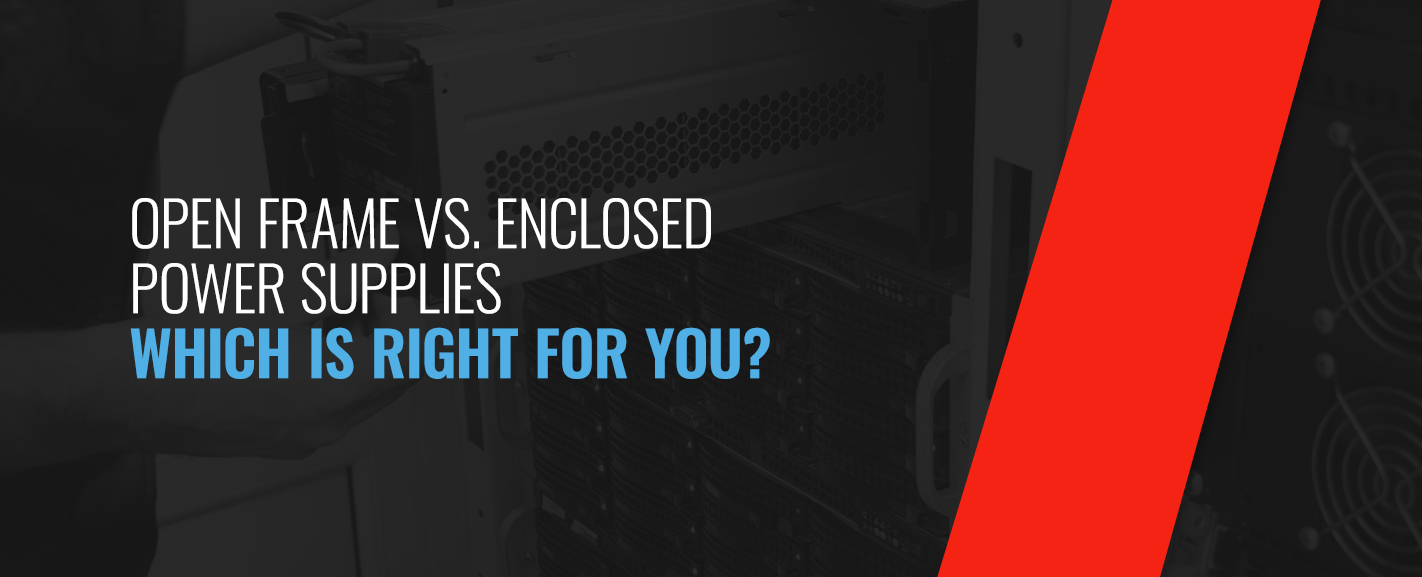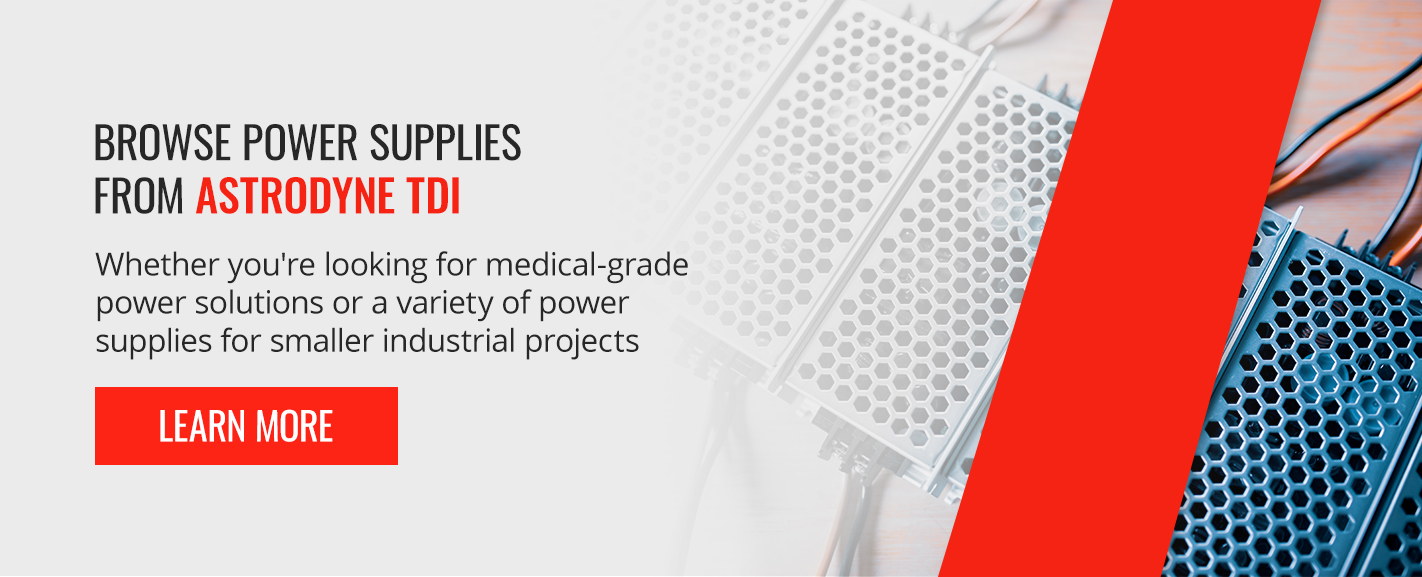RESOURCES
Open Frame vs Enclosed Power Supplies

Open Frame vs. Enclosed Power Supplies —Which Is Right for You?
The power supply you choose for your application needs to meet your performance requirements and fit in the space allocated for it in your equipment, but does it need to have an enclosure? The answer to this question, of course, depends upon your application. For example, the needs for a home-use medical application may differ greatly from those when considering use in a manufacturing plant. Some considerations are discussed below.
What Is the Difference Between Open Frame and Enclosed Power Supplies?
An open frame power supply typically is constructed by attaching electronic components to a printed circuit board (PCB), often on both sides. Open holes in the corners of the PCB are provided to mount the power supply in its application, using spacers and screws. In some cases, these amounts are required to provide a conductive path to earth ground for proper safety and or EMC compliance and overall operation of the power supply.
An enclosed power supply takes the open frame format and encloses it in a frame or box. This enclosure is often metal (but can also be another material, such as plastic), and may be either solid or perforated. Indeed, some power supplies are fully-enclosed, sealed units, while others may use an enclosure similar to a fence or cage. The type of enclosure used depends on the environment and application in which the power supply is intended to be used.

What are Some Enclosed Power Supply Considerations?
Operator safety, electromagnetic compatibility, available space, and thermal management are all potential considerations when selecting a power supply for a particular application.
Operatory Safety
One of the most prevalent concerns related to power supplies is the safety of operators, repair workers, and service technicians. Because power supplies pose a risk of shock or electrocution if handled improperly or if parts of the body come into contact with certain circuits on the supply, many applications require a physical barrier to prevent such incidents. An open frame power supply will not offer much protection from such occurrences, since all its circuitry is exposed. By adding an enclosure to a power supply, the risk of injury is reduced; in some cases, it can be all but eliminated. The type of enclosure and the size of any openings in it should consider each application and usage scenario.
Electromagnetic Compatibility (EMC)
Electromagnetic compatibility (EMC ) is a system’s or equipment's ability to function without disturbing – or being disturbed by – its surrounding electromagnetic environment. An enclosed power supply can provide shielding that both protects it from electromagnetic interference and prevents it from interfering with nearby electronic equipment; however, an enclosure is not always necessary to achieve this. The performance specifications for each power supply will list its EMC ratings; look for Class A (less stringent) or Class B (more stringent) emissions ratings.
One detail to pay attention to regarding EMC performance is a requirement for an Earth Ground connection. While Class I safety designs utilize an Earth Ground, Class II safety designs do not require one for safety reasons; however, some Class II power supplies require an Earth Ground connection to meet prescribed EMC performance levels. In such a scenario, the connection to Earth Ground is called “Function Ground.”
Available Space
In many applications, the size of the power supply is a major consideration. Enclosed power supplies will typically have a bigger footprint and require a larger volume than an open frame design; however, an open frame design is not always an advantage for size-constrained applications. Certain spacing requirements, commonly known as “creepage and clearance”, for safety certifications must be considered when developing the complete product design. An enclosed power supply with a metal frame may already accommodate the safety spacing requirements, leading to a similar or even smaller overall application space requirement, versus an open frame power supply.
Thermal Management
Heat is a primary cause of electronic component failure in power supplies, so thermal performance is a significant consideration. All power supplies are rated for operation at specified power levels over a range of temperatures; at higher temperatures the allowed operating power level is lower. Sometimes an open frame power supply will provide a thermal advantage because its circuits are more open to the air, thus allowing for more cooling via free air convection. Depending on the design of an enclosed power supply, its rated operating power may be lower than that of a similar open-frame model; however, this is not always the case. Some power supplies rely on other methods, such as forced air (fan) or conduction cooling, as the primary way to reduce thermal strain, so it is important to review each power supply’s performance specifications thoroughly.
Browse Power Supplies From Astrodyne TDI
Whether you're looking for medical-grade power solutions or power supplies for industrial or commercial projects, Astrodyne TDI offers a wide range of open frame and enclosed power supply models. We design and manufacture a broad variety of innovative power solutions, with some of our products being used in lifesaving applications worldwide.
We want to help you meet your unique job specifications. Contact us today to learn more about our products and services!


